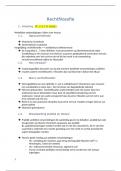Other
Exam summary Governance & Strategy: literature, lectures and workgroups!
- Course
- Institution
This summary contains the headlines from the lectures, workgroups and the most important concepts from the literature. Perfect to use to study for the exam. I finished this course with a 7,6!
[Show more]












